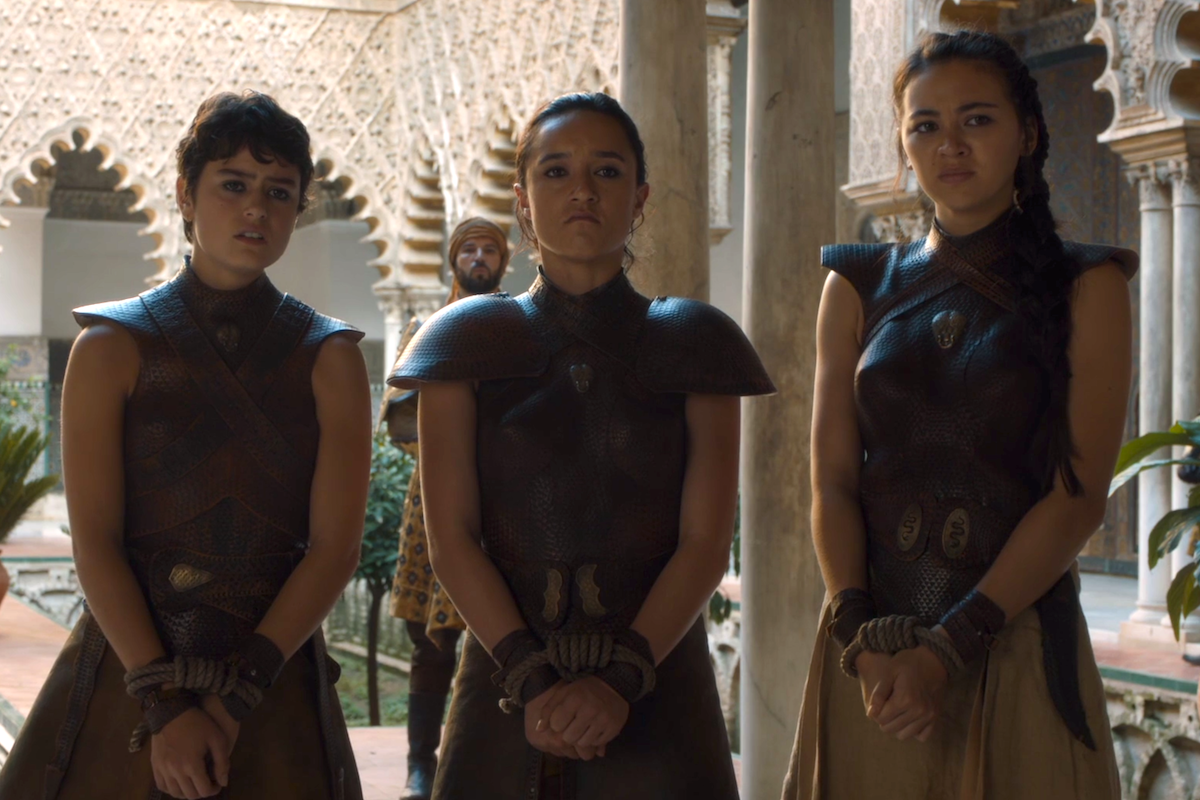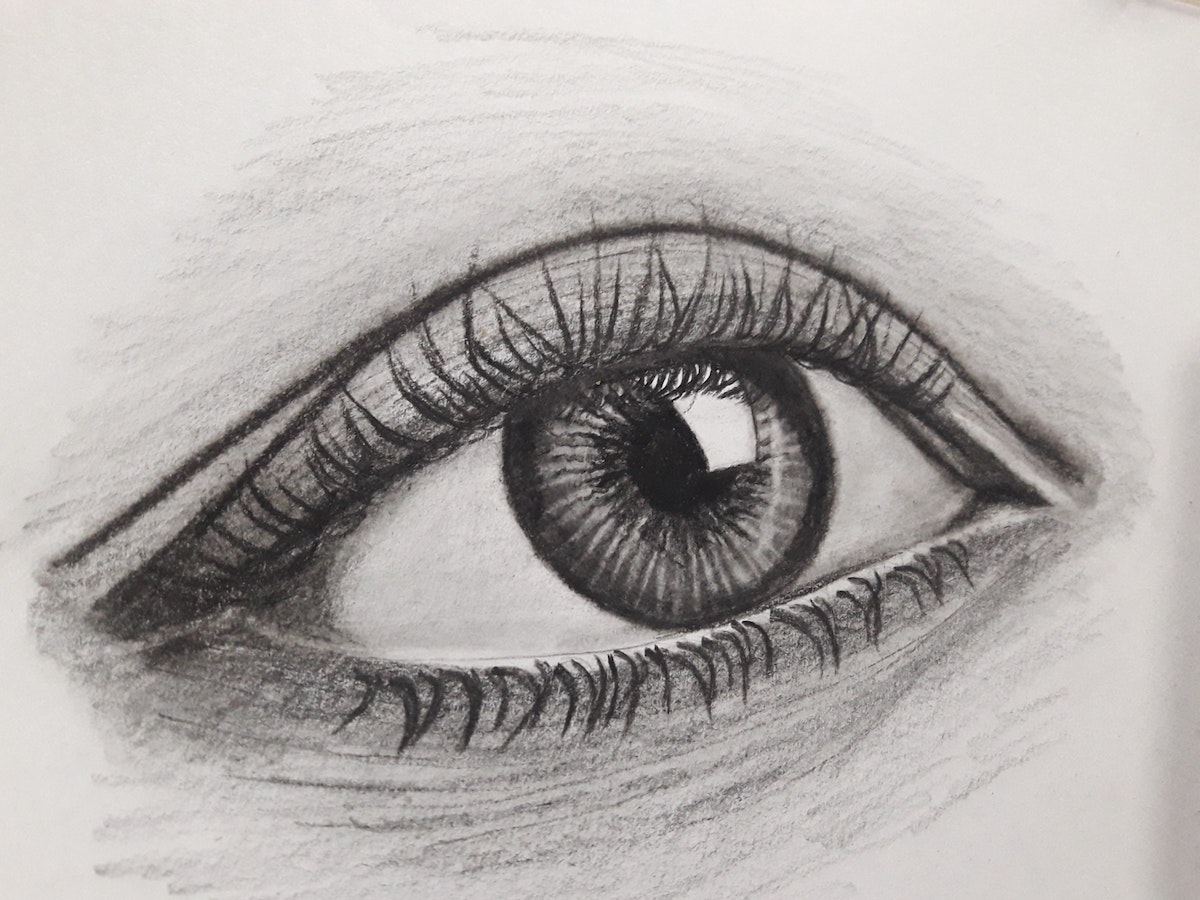HBO’s “Game of Thrones” was the largest television phenomenon of the 2010s, skyrocketing from a niche fantasy series to a fandom with millions of followers and viewers. However, its popularity and legacy have been tainted by its final season. Critics and casual viewers alike decried the terrible writing and poor characterization.
However, more dedicated fans and critics claim that the poor writing and characters began much earlier than season 8. And the group of characters they almost always use as an example are the Sand Snakes. The Sand Snakes are the illegitimate daughters of fan favorite Oberyn Martell. But although their sire was generally beloved by viewers, the Sand Snakes themselves were not received well at all.
But why were they so dismissed by the fandom? How did their portrayal make them some of the most hated “Game of Thrones” characters? And how are they different from their book counterparts?
Learn the answers to these questions as you re-examine the Sand Snakes today.
How Were the Sand Snakes Portrayed in the Series?

The Sand Snakes are officially introduced into the television show in the fourth episode of season five, “The Sons of the Harpy.” The three main members of the group retained their names: Obarra Sand, Nymeria Sand and the youngest, Tyene Sand. However, it quickly becomes apparent that their characterization pales in comparison to say “Star Wars” girls.
Below are some of the most common criticisms people had about how the writers of the show portrayed these female characters.
-
Essentially Identical
The Sand Snakes in the show are essentially the same personality replicated three times. The only real differences between the women are their appearances, names and chosen weapons. Obarra Sand prefers a spear, Nymera Sand wields a whip (a puzzling and nonlethal choice) and Tyene Sand uses daggers with poison.
Aside from these superficial differences, they don’t really get enough characterization to make them memorable from not just other “Game of Thrones” characters but from their sisters. They are more like bad plot devices than actual characters. Even when they are talking to one another, viewers can’t get detect any real difference between them.
-
Limited Screen Time
“Game of Thrones” has been criticized for not giving their characters of color enough screen time and using them as props for their white characters. The Dorne plotline, which involves pitting the Sand Snakes versus their uncle Prince Doran Martell and Jaime Lannister, is easily one of the most ridiculed subplots of the show.
The people of Dorne in the books are coded as Hispanic or Latinx, and the show borrows heavily from this, shotting most of the Dorne scenes in Spain. However, they receive the least development and they barely show up after season 5, effectively reduced to glorified cameos in season 6 before being disposed of entirely by season 7. Due to the limited screen time, the Snakes’ empty characterization becomes more apparent.
-
Shameless Racism
As previously noted, most of the Donrish characters in the books and shows are coded to be Latinx or Hispanic. The first major Dornish character, Oberyn Martell, is played by the Chilean American actor Pedro Pascal. While Oberyn was portrayed with nuance and depth, the Sand Snakes’ portrayal were entirely reliant on a racist trope: The Spicy Latina. This trope refers to the tendency of white writers to shoebox characters coded as Latina or Hispanic as loud, violent and very sexual.
And the Sand Snakes fit this bill. In fact, they only fit these tropes. They are passionate about making love and making war. Obarra and Nymeria Sand are both violent and opiniated. Their younger sister, Tyene Sand, is sensual and tries to seduce Bron, a man twice her age and exposes herself for no reason. The shamelessly racist portrayals of the Snakes is one of the signs of the poor writing the series suffers.
-
Ignoble Ends
Finally, after their lackluster performance in season 5 and disappearing for most of season 6, the Snakes appear in the penultimate season…only to meet ignoble ends, just like Carmilla of “Castlevania.”
Despite their supposedly fearful reputation as fighters, the Snakes are all beaten in minutes by another hated character, Euron Greyjoy. To add insult to injury, the Snakes are beaten with their own weapons.
Obarra Sand is impaled with her own spear, Nymeria Sand is strangled with her hilariously ineffective whip and Tyene Sand is poisoned with the toxin she used on her daggers. They only served to show how dangerous the (white) Euron is as a threat. One reviewer, writing for “The Verge,” said its best: the Snakes are best used as punchlines, not real characters.
Needless to say, fans of the Snakes in the book series were less than pleased with how these dangerous and devious women were portrayed by the showrunners.
But for those who aren’t familiar with the books, what were the Sand Snakes like in the novels?
How Were the Sand Snakes Portrayed in the Books?

Just like in the series, there are eight total Sand Snakes, but only three are major characters. Ellaria Sand, Oberyn’s lover and the Snake’s leader in the series, is largely absent from the books after his death.
Instead, the main schemer is Arianne Martell, the heir to Dorne, daughter of Prince Doran Martell and cousin to the Snakes. However, Arianna Martell goes the same way as Lady Stoneheart, and never appears in the series.
The Snakes themselves are different from their series counterparts. They still chafe under the restrictions placed on them by their uncle, Doran Martell, but each one has different notions of how to take revenge on their enemies.
Below are summaries of the Snakes as they are portrayed in the books and their plans.
-
Obarra Sand
Obarra Sand is the oldest of the sisters and is the most like the version in the series. Described as violent, hot-tempered and a warrior, she uses the spear, shield and whip in battle. She is also the first Sand Snake encountered.
Obarra confronts her uncle, Doran Martell, demanding vengeance for her sire. Her plan is the most violent and non-sensical: she wishes to take the Martell’s forces to destroy the city of Oldtown, a settlement that has nothing to do with the feud between the Martells and Lannisters.
Doran orders her arrest, along with Arianne Martell’s and the rest of the older Snakes. Upon her release, Doran charges her with hunt a renegade knight who had attacked Princess Myrcella, who is very much alive and protected by the Martells in the books.
-
Nymeria Sand
Nymeria Sand, the second Snake, is described as a very beautiful woman who wears elegant clothing. However, she does not use the whip in battle, preferring to use a multitude of daggers she hides about her person. The daughter of Oberyn and a noble woman from the Free City of Volantis, she is easily the most diplomatic and cunning of the Sand Snakes.
Her plan for vengeance is one of the most reasonable and ruthless. Instead of open war, Nymeria suggest to her uncle that they send assassins to kill Tywin Lannister, Cersei and Jaime as well as the reining Tommen. This displays that unlike Obarra, Nymeria knows who she should be angry at and less prone to spilling blood.
After she is arrested and released, Doran sends her to King’s Landing to become part of the Small Council, ostensibly to spy and to protect Dorne’s interests.
-
Tyene Sand
Tyene Sand is probably the most different from her show version. In the books, Tyene does not share her sister’s dark and olive coloration. Rather, she is described as more Caucasian, with pale skin and blonde hair. She is also easily the most vicious and sadistic of the three, her few lines of dialogue revealing a delight in poison and causing harm.
Unlike her sisters, Tyene’s chosen weapon is poison, a skill passed to her by Oberyn. She is closest to Arianne Martell and treats her as a sister.
Her plan for revenge is the most politically savvy and safe. She tells her uncle to crown Pricness Myrcella as queen, which would be legal in Dorne since they have egalitarian primogeniture, meaning the oldest child, regardless of sex, inherits. The act would spur the Lannisters to attack Dorne, but Tyene plans to ambush their armies among the sands and mountains of the land. Her plan shows her political, military and social acumen as it would most likely succeed.
After her arrest and release, Doran sends Tyene to King’s Landing disguised as a septa to infiltrate the religious fanatics led by the High Sparrow.
It is clear to everyone that the Sand Snakes in the books a re as different as they are fleshed out. Thye are immensely popular characters because of how well-written they are. The Snakes only appear in a handful of chapters over two books and yet they are already infinitely more intriguing and well-rounded characters than the sexist, racist caricatures that appeared on screen.
Hopefully, the criticism and scathing opinions levelled against the writers of “Game of Thrones” provoke positive change to future portrayal of female characters of color in film and television.



